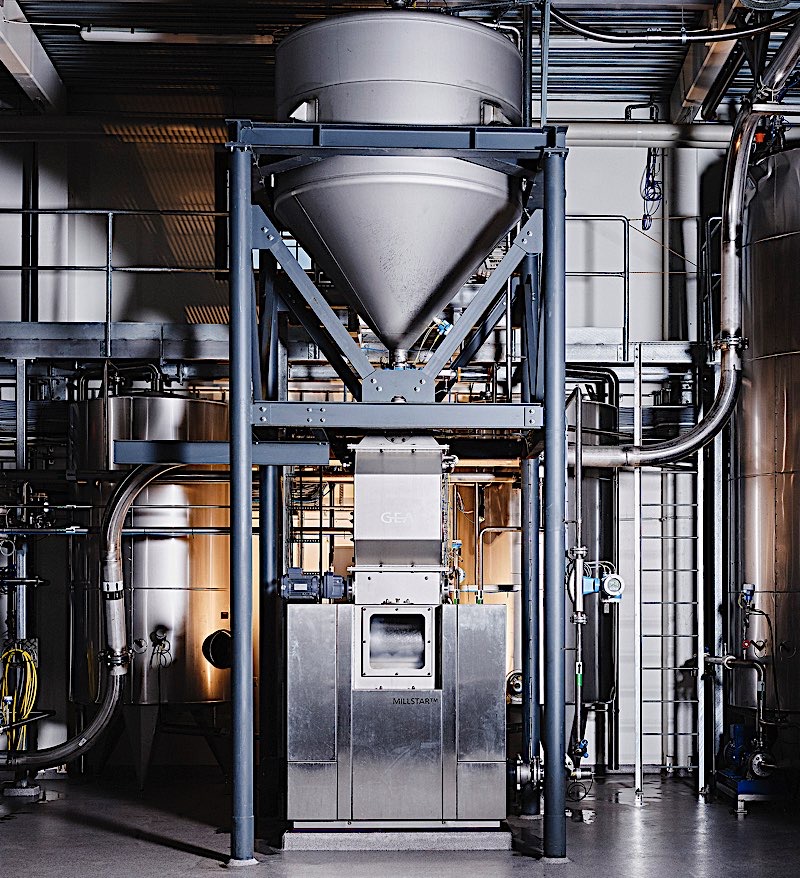MILLING

The production process starts with the malt being transported from our malt silos to an intermediary bin located above our mill. This bin rests on load cells and we measure up 1350 kilos for a normal batch. We have a wet mill, which means that the malt is soaked prior to milling and then crushed with warm brewing water. This crushing breaks down the malt into pieces of husk, coarse crush and flour. This mixture is called grist, the composition of which is the basis for the mashing. Mixed with brewing water, it acquires a porridge-like consistency.
The advanced process automation commences in the mill, which has a capacity of five tonnes of malt per hour and is manufactured in Germany, by GEA, a company that supplies a number of the world's foremost breweries with equipment.
The mill is built in sections. At the top, there is the intermediary bin, which sits on load cells. This is used to control the amount of malt needed for the batch. Below the malt silo, there is a pre-soaking chamber. In this, the malt is soaked prior to milling. The moisture content then rises from 5 % to 20 %, which makes the husk more elastic. Below this is the single pair of rollers, and while the malt is crushed, warm brewing water is sprayed into the mill. The rollers crush the malt kernels while the husk remains intact due to its elasticity. An intact husk is an important part of the following sparging.
This malt and water mixture is then collected at the bottom of the mill. This is the mash, which, by a precise regulation of temperature, acquires ideal conditions for converting starch into sugars. This is all automated, resulting in a far more consistent quality than if it were done manually.
